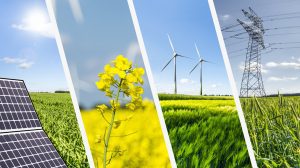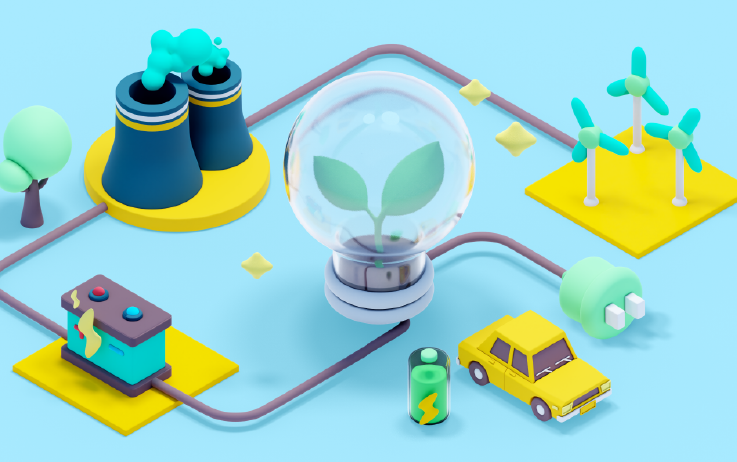Every industry is facing pressure to lessen its environmental impact as climate change and environmental issues get more attention. Sustainable technology has become a potent remedy, assisting individuals, companies, and communities in cutting waste and carbon emissions. However, sustainable technology is more than simply a fad; it is an essential component in building a more sustainable and sustainable future. This article will define sustainable technology, look at actual cases, and weigh the advantages and difficulties of using it.
What Is Sustainable Technology?

Any invention or method intended to reduce environmental harm while maintaining long-term economic viability is considered sustainable technology. By lowering carbon footprints, preserving natural resources, and improving process efficiency, sustainable technology seeks to address a number of issues. In order to create a more environmentally friendly future, sustainable technologies are becoming more and more important in fields like agriculture and urban planning.
Key Areas of Sustainable Technology:
- Agriculture: Leveraging IoT and AI for crop monitoring and water conservation.
- Consumer Electronics: Producing eco-friendly gadgets, such as smartphones with recycled materials.
- Healthcare: Utilizing telemedicine and digital records to reduce paper use and travel-related emissions.
- Fashion: Developing sustainable materials like TENCEL and bamboo, which offer biodegradable alternatives to synthetic fabrics.
- Urban Infrastructure: Introducing smart LED streetlights and public EV charging points for greener cities.
Benefits of Sustainable Technology
- Environmental Impact Sustainable technology helps reduce emissions and resource consumption, making significant environmental contributions. For example, LED streetlights use significantly less power than traditional lighting, helping cities cut down on electricity use and lower emissions.
- Cost Savings While sustainable technology often requires a higher initial investment, it can lead to considerable cost savings in the long run. For instance, agriculture IoT sensors optimize water usage, which conserves resources and reduces costs.
- Improved Quality of Life Sustainable technology not only benefits the environment but also improves the quality of life. Technologies like telemedicine reduce the need for transportation, which is not only cost-effective but also convenient, especially for people in remote areas.
- Future-Proofing Industries By investing in sustainable technologies, companies can better prepare for future regulations and customer demands for eco-friendly products. Using sustainable materials like bamboo or TENCEL in fashion allows brands to appeal to eco-conscious consumers while reducing landfill contributions.
Examples of Sustainable Technology

-
Agriculture
- IoT-Based Water Management: IoT sensors help monitor soil moisture, optimizing water use and enhancing crop yield. This technology allows farmers to conserve water, a precious resource, while maintaining healthy crop production.
- Drones in Agriculture: Drones equipped with cameras and AI-driven analytics monitor crop health, apply fertilizers, and assess water needs, lowering carbon emissions by reducing the need for heavy machinery like tractors.
-
Consumer Electronics
- Fairphone: An eco-friendly smartphone brand, Fairphone uses recycled and “fair” materials to produce long-lasting phones with removable batteries. This approach significantly reduces electronic waste.
- Electrochromic Glass: Found in homes and offices, this smart glass changes opacity based on sunlight, reducing the need for heating or air conditioning, thus saving energy.
-
Healthcare
- Telemedicine: Virtual medical appointments save patients travel time and reduce carbon emissions, making healthcare accessible and eco-friendly.
- Electronic Health Records (EHRs): Digital health records eliminate paper-based systems, improving data transmission efficiency between providers while reducing environmental impact.
-
Fashion
- Eco-Friendly Fabrics: Sustainable fabrics like TENCEL, bamboo, and hemp provide viable alternatives to polyester, which is non-biodegradable. Using these fabrics reduces landfill waste and energy consumption.
- Virtual Try-Ons: Online virtual try-ons reduce the return rates of online purchases, minimizing waste and carbon emissions from transportation.
-
City Infrastructure
- Smart LED Streetlights: LED streetlights with sensors adjust brightness based on activity levels, conserving energy and reducing light pollution.
- EV Charging Stations: Many cities are now investing in charging infrastructure to support electric vehicles, reducing reliance on fossil fuels and promoting sustainable transport.
Case Studies
BedZED (Beddington Zero Energy Development)
BedZED in London is a model of sustainable housing that uses rooftop gardens, solar panels, and energy-efficient design to create a self-sustaining community. The project has been highly successful in reducing energy consumption and providing a model for future sustainable housing.
Virgin Atlantic and Sustainable Aviation Fuel (SAF)
SAF, which can cut aviation’s carbon emissions by up to 80%, was recently used by Virgin Atlantic on a flight from London to New York. The fact that SAF is made from cooking oils and recovered carbon shows how important sustainable technology can be to the aviation sector.
Fairphone
By developing modular phones that are simpler to maintain and upgrade, Fairphone has completely reimagined sustainable consumer electronics. Their dedication to extended software maintenance and recyclable materials greatly lowers e-waste and encourages sustainable production in the tech sector.
Challenges in Implementing Sustainable Technology
- Cost and Accessibility Although sustainable technology can lead to savings over time, the upfront cost is often high, which can be a barrier for smaller businesses. Implementing IoT solutions in agriculture requires significant investment, which may not be affordable for all farmers.
- E-Waste and IoT Devices Many sustainable technologies rely on IoT devices that have limited life spans. For instance, IoT sensors in agriculture need regular replacement, contributing to e-waste. A more sustainable approach would require devices with longer life spans and eco-friendly disposal options.
- Data Privacy and Security IoT-based sustainable technologies often require internet connectivity, making them vulnerable to hacking and cyber threats. Ensuring that IoT systems in city infrastructure are secure is crucial to prevent misuse of data and maintain public trust.
- Inequality and Accessibility Sustainable technology may widen the gap between developed and developing regions. For example, while some cities have robust EV charging infrastructure, many rural or less affluent areas lack access, hindering equitable adoption.
Future of Sustainable Technology
The future of sustainable technology is bright, with promising advancements on the horizon:
- Sustainable Aviation Fuel (SAF): SAF has the potential to transform the aviation industry, reducing its carbon footprint drastically. However, scaling production to meet global demand remains a challenge that researchers are actively working on.
- AI in Healthcare: AI can improve diagnostics in healthcare, reducing resource usage and enhancing patient outcomes. For example, AI-driven scans can help detect diseases early, improving treatment efficiency and reducing costs.
- Smart City Innovations: Future cities will likely see more energy-efficient technologies, such as smart grid systems that can manage power consumption more effectively, and infrastructure built with recycled materials for enhanced sustainability.
Conclusion
An essential tool in our quest for a more environmentally friendly future is sustainable technology. Sustainable technologies are having a significant impact on a variety of industries, including fashion, healthcare, city planning, and agriculture. The advantages are substantial—lower emissions, increased efficiency, and healthier environments—but there are still issues like cost and accessibility. Sustainable solutions will become progressively more essential to our everyday lives as technology develops, opening the door to a more sustainable future for future generations.




